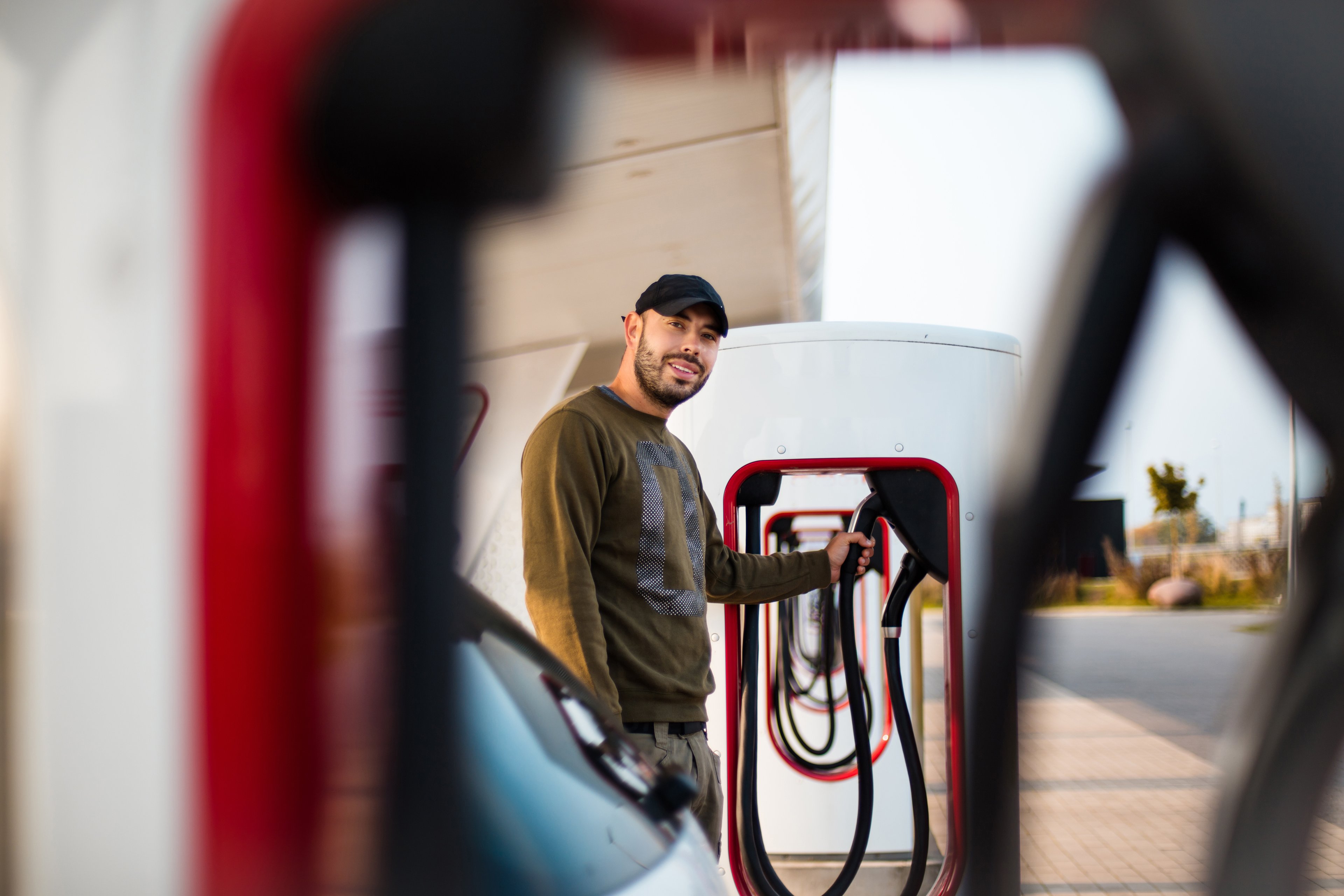Probably one of the most commonly cited arguments against electric cars is range anxiety. To combat this fear of not having a place to charge before your battery quits, electric-car maker Tesla Motors (TSLA 0.14%) has been rapidly expanding its Supercharger network in the U.S., Canada, Europe, and Asia. The company now has 354 Supercharger stations and 1,936 Superchargers globally, according to data from its website. In the U.S., Tesla is currently opening around two per week.

Tesla's Supercharger network today. Red icons are existing locations, gray icons are locations that are coming soon. Image source: Tesla Motors.
But Tesla's plan to solve range anxiety goes beyond its Supercharger network. There is another, less-followed network of a different type of charger Tesla has been quietly rolling out at a rapid clip. Tesla calls the program Destination Charging.
The Destination Charging network
You'll find these charging locations on Tesla's website, listed as Charging Partners. These charging locations use Tesla Wall Connectors for charging. Tesla confirmed with The Motley Fool that there are about 350 locations in North America and more than 800 worldwide. Most of these locations have two Wall Connectors, says Tesla spokeswoman Alexis Georgeson.
Wall Connectors are popping up at hotels, casinos, ski resorts, restaurants, shopping centers, airports, and even mobile phone stores. In the U.S., Wall Connectors are showing up at well-known names like Costco, Hyatt, Four Seasons, Ritz-Carlton, Best Western, and Westin.
Tesla's Destination Charging program has exploded out of nowhere, with initial efforts in rolling out the program beginning early in second quarter 2014. Furthermore, much of the growth has occurred in the last few months. One of the last updates on the program was less than five months ago, from The Mercury News; at the time, Tesla had just 106 Destination Charging locations. The program is still in rapid expansion mode, with locations being added daily.
Wall Connectors give Tesla owners a charge rate of up to 58 miles per hour when paired with Dual Chargers, which Model S owners can install in their cars for $1,500 before delivery, or $3,600 after delivery. Tesla owners without a second onboard charger can charge with a Wall Connector, too, but they shouldn't expect to charge at a rate higher than 29 miles per hour.
Tesla's Alexis Georgeson explained to The Motley Fool how the Destination Charging network and the Supercharger network complement each other in an effort to make traveling in a Tesla as convenient as possible:
Our growing Supercharger network has inspired Model S owners to hit the road in increasing numbers. Owners can drive all day, charging for 30-40 minutes at Superchargers, and then stop at night to stay at one of the many hotels and resorts that have installed Tesla High Power Connectors. By offering convenient Destination Charging services to Model S owners, these locations are replicating the convenience our owners have become accustomed to at home. Owners wake up relaxed with a full charge and ready to hit the road again.
It's clear that the Destination Charging locations Tesla is choosing are locations where owners would likely be staying for about 45 minutes or more -- long enough to get a meaningful charge from a Wall Connector.
Like Tesla's Supercharger network, these Wall Connectors are free for Tesla owners.
Compelling economics
The economics for all parties involved are compelling.
The cost of the Wall Connector is minimal; the company sells the contraption on its website for $650. And the installation of a 240-volt circuit isn't expensive -- probably no more than $3,000 and as little as $500.
Who pays for the electricity? The charging partners, Georgeson says.

Model S charging. Source: Author.
When you do the math, offering free Wall Connector charging is a low-cost way to provide greater customer convenience while also potentially serving as a marketing tool. Utility companies in the U.S., on average, charge just $0.12 per kilowatt hour. If the typical Tesla owner needed about a half-charge during their stay at a hotel, it would only cost the hotel about $5.15. In the case of a restaurant, a Tesla with a second onboard charger could charge 90 miles in an hour and a half, costing the restaurant just $3.55 in electricity.
And who knows? Assuming Tesla does stick to its 2017 timing for a launch of a lower-cost car, and that it really can hit its goals of producing 500,000 cars per year by 2020, there could eventually be a tipping point when not having Wall Connectors could become a slight disadvantage for hotels and restaurants. While Tesla investors shouldn't count on such an optimistic scenario, it is a possibility worth considering.

Model S charging at a Supercharger location. Source: Tesla Motors.
Sure, if electric car sales continue to grow, there will need to be more than two Wall Connectors at Destination Charging locations. Obviously, the more Tesla cars there are on the road, the more demand there will be for charging. But the Supercharger network, with its locations within a Tesla's driving range for 80% of the U.S. population, and a network of supplementary charging destinations that is suddenly exploding out of nowhere, showcases the ease of building out the infrastructure needed to support convenient, fully electric driving. And keep in mind: The fact that Teslas get 208-plus miles of driving range is -- in and of itself -- the biggest feat in solving charging infrastructure problems, since this means owners with home charging only have to charge when traveling long-distance.






